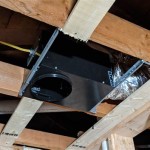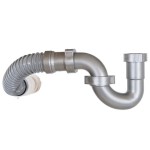Cost To Install Ceramic Tile In Bathroom: A Comprehensive Guide
The installation of ceramic tile in a bathroom is a common home improvement project, valued for its aesthetic appeal, durability, and water resistance. However, understanding the associated costs is crucial for effective budgeting and project planning. The total cost to install ceramic tile in a bathroom is influenced by a variety of factors, including the size of the bathroom, the type and quality of the tile, the complexity of the installation, and labor costs.
This article aims to provide a detailed breakdown of the costs associated with ceramic tile installation in a bathroom, equipping homeowners with the knowledge needed to make informed decisions and navigate the process effectively. We will explore the various factors that influence the overall cost, including material costs, labor costs, and potential additional expenses.
Understanding Material Costs
The selection of ceramic tile significantly impacts the overall cost of the project. Ceramic tiles are available in a wide range of styles, sizes, and qualities, each with a different price point. Basic ceramic tiles are generally more affordable, while higher-end options, such as porcelain tiles that mimic natural stone, can be considerably more expensive. The cost of the tile itself typically accounts for a significant portion of the total project expense.
The price per square foot of ceramic tile can range from $2 to $20 or more, depending on the specific tile chosen. Simple, unglazed ceramic tiles suitable for basic bathroom floors or walls might fall on the lower end of the price spectrum. On the other hand, decorative tiles, mosaic patterns, or large-format tiles with intricate designs can command a higher price. The quantity of tile required will depend on the square footage of the bathroom floor and walls that need to be tiled, as well as any allowance for waste due to cuts and breakage. It's generally recommended to purchase approximately 10-15% more tile than the calculated square footage to account for these factors.
In addition to the tile itself, several other materials are necessary for a successful installation. These include thin-set mortar, grout, sealant, and backer board or underlayment. Thin-set mortar is used to adhere the tiles to the subfloor or wall. Grout fills the spaces between the tiles, providing a waterproof seal and enhancing the overall appearance. Sealant is applied to the grout lines to further protect against moisture penetration. Backer board, typically made of cement board or a similar material, provides a stable and moisture-resistant surface for the tiles to be installed upon, especially in areas exposed to water, such as shower walls and floors.
The cost of these ancillary materials can add up and should be factored into the overall budget. Thin-set mortar typically costs between $15 and $30 per bag, depending on the type and quality. Grout can range from $10 to $50 per bag, based on the type (sanded or unsanded) and color. Sealant usually costs between $5 and $15 per tube. Backer board typically costs between $10 and $20 per sheet. The required quantities of these materials will vary depending on the size of the bathroom and the specific installation requirements.
Furthermore, homeowners may need to purchase or rent tools for the installation, such as a tile cutter, trowel, grout float, sponges, and buckets. While some homeowners may already own some of these tools, others will need to acquire them, adding to the initial material costs. Renting these tools may be a more cost-effective option for those who do not anticipate using them frequently.
Analyzing Labor Costs
Labor costs represent a significant portion of the total cost to install ceramic tile in a bathroom. The hourly rate or per-square-foot charge for tile installation can vary widely depending on the location, the experience and skill of the installer, and the complexity of the project. Generally, labor costs can range from $4 to $15 per square foot, or $50 to $100 per hour. However, these figures can fluctuate based on market conditions and the specific characteristics of the job.
The complexity of the installation can significantly impact labor costs. Simple, straightforward installations on a level floor or wall will typically require less time and effort, resulting in lower labor charges. Conversely, more intricate installations, such as those involving complex patterns, mosaic designs, or custom cuts, will demand more time and skill, leading to higher labor costs. Additionally, the presence of obstacles, such as plumbing fixtures or irregular wall shapes, can increase the complexity and time required for installation, thereby affecting labor charges.
The level of preparation required before tile installation can also influence labor costs. If the existing floor or wall needs to be leveled, repaired, or reinforced, this will add to the overall time and effort required. Similarly, if the old flooring or tiles need to be removed, this will incur additional labor charges. It is important to have a clear understanding of the existing conditions and the necessary preparation work before obtaining quotes from tile installers.
The experience and qualifications of the tile installer can also affect labor costs. Highly experienced and skilled installers may charge higher rates, but they are often able to complete the job more efficiently and with a higher level of quality. Lower-priced installers may be less experienced and may not be able to deliver the same level of workmanship. It is advisable to obtain multiple quotes from different installers, check their references, and review their past work before making a decision.
Besides the actual tile installation, many contractors also quote for the demolition and removal of the existing flooring. This can add to the labor cost, depending on the type of flooring and the size of the bathroom. Some contractors might bundle this service into the overall quote, while others might charge it separately. Clarity on what the labor cost includes is imperative for accurate budgeting.
Accounting for Additional Expenses
In addition to the material and labor costs, several other potential expenses should be considered when budgeting for a ceramic tile installation project in a bathroom. These additional costs can include demolition and removal of existing flooring, plumbing work, electrical work, and disposal fees.
If the existing flooring needs to be removed before installing the new ceramic tile, this will incur additional costs. The cost of demolition and removal can vary depending on the type of flooring and the difficulty of the removal process. For example, removing old vinyl flooring or carpet is generally less expensive than removing old ceramic tile or hardwood flooring. Disposal fees for the removed materials can also contribute to the overall expense.
Plumbing work may be necessary if the installation involves moving or replacing plumbing fixtures, such as toilets, sinks, or showers. This work should be performed by a licensed plumber to ensure compliance with local codes and regulations. The cost of plumbing work can vary depending on the scope of the work and the rates charged by the plumber. It is recommended to obtain separate quotes from plumbers for any necessary plumbing work.
Electrical work may also be required if the installation involves moving or replacing electrical outlets or fixtures. This work should be performed by a licensed electrician to ensure safety and compliance with electrical codes. The cost of electrical work can vary depending on the scope of the work and the rates charged by the electrician. As with plumbing work, it is recommended to obtain separate quotes from electricians for any necessary electrical work.
Disposal fees for waste materials generated during the installation process can also contribute to the overall cost. These fees can vary depending on the amount of waste and the disposal facility used. Some contractors may include disposal fees in their overall quote, while others may charge them separately. It is important to clarify whether disposal fees are included in the quote before proceeding with the project.
Furthermore, unexpected issues can arise during the installation process, such as hidden water damage or structural problems, which can require additional repairs or modifications. It is prudent to set aside a contingency fund to cover any unexpected expenses that may arise. A contingency fund of 5-10% of the total project cost is generally recommended.
Finally, consider the cost of permits. Depending on local regulations, a permit might be required for certain bathroom renovations, especially if structural changes are involved. Failing to obtain necessary permits can lead to fines and project delays. Check with your local building department to determine if a permit is required and factor the cost into your budget.

Tile Flooring Installation Cost Floor S Fixr

Ceramic Tile Flooring Installation Cost Fixr

How Much Does Ceramic Tile Installation Cost 2025

Budgeting For Tiles Average Cost To Retile Abathroom And Options

Ceramic And Porcelain Tile Cost Installation

Ceramic Tile Flooring Installation Cost Fixr

How Much For A New Bathroom Tile Floor

Cost To Install A Ceramic Tile Shower Tiles S Fixr

Shower Tile Installation Cost 2025 Guide To Remodel

Budgeting For Tiles Average Cost To Retile Abathroom And Options
Related Posts







